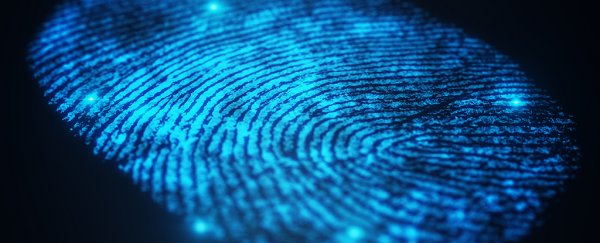You don't need to have a drug habit to come into contact with drugs, apparently: a new study found 13 percent of volunteers had traces of cocaine or heroin on their fingertips, despite never having used the drugs.
It's all to do with environmental factors, mainly exposure from banknotes – drugs attract money, drug dealers and drug users handle banknotes, and traces of these substances get passed through the cash network.
We've known about this kind of contamination for a while, but the researchers say they were surprised that it seems so widespread. They're now working on a threshold test to identify those who've actually used drugs versus those who've just picked up traces from the surrounding environment.
Having that kind of clarification from a simple fingerprint test could be very helpful indeed for law enforcement agencies.
"Believe it or not, cocaine is a very common environmental contaminant – it is well known that it is present on many banknotes," says one of the researchers, Melanie Bailey from the University of Surrey in the UK.
"Even so, we were surprised that it was detected in so many of our fingerprint samples."
The team took fingerprint samples from 50 people who had never taken drugs, and found traces of illegal substances on more than 1 in 10 of them, with cocaine the most common.
These drugs were found in tiny amounts but that can still add complications for forensic examiners.
Mind you, the number could also be a reflection of the environment.
"The people we took samples from were at the university, so it is possible they knew others who were taking substances, or had been in an environment where these substances were taken," Bailey told Ian Sample at The Guardian.
The researchers now think they've come up with a definitive method of fingerprint testing for spotting people who are actually using drugs.
Those taking drugs will have more of the substances on their fingers, due to both handling these drugs and having their byproducts sweat out through their pores.
They tested the new method before and after volunteers washed their hands, and after drug users had shaken hands with non-drug users – another way that these substances can get passed along.
Fingerprint samples from the non-drug users were measured against samples from 13 cocaine users and 12 heroin users to establish a threshold level – a cut-off point where trace amounts are too high to have been transferred through the environment.
"By establishing a threshold for significance on a fingerprint test, we can give those tested the piece-of-mind of knowing that whatever the result of the test may be, it was not affected by their everyday activities or shaking hands with someone that had taken drugs," says Bailey.
Different thresholds were determined based on whether users had washed their hands or not, thresholds which can be applied to fingerprint drug tests in the future.
More research is going to be needed beyond this rather small sample, but this is thought to be the first study to try and establish a cut-off rate to spot the actual drug users from those who've picked up traces of drugs from other people or by handling cash.
It's a start that shows such a threshold can be found and be found to be useful. Eventually, this type of testing could complement or even replace existing drug tests, whether in police labs or in places of work.
"There are many factors that set fingerprint testing apart," says one of the team, Mahado Ismail from the University of Surrey.
"It's non-invasive, easy to collect and you have the ability to identify the donor by using the sample. Our study will help to add another robust layer to fingerprint drug testing."
The research has been published in Clinical Chemistry.
